An important recent development in cloud infrastructure is the introduction of new, cost-effective compute instances based on AMD EPYC processors. Although infrastructure details might not be the most exciting part of the cloud, checking the performance and price of your cloud provider’s options can give you an advantage. Not all clouds, or processors, are the same, and the savings might surprise you. Oracle Cloud Infrastructure AMD compute instances perform 30 percent better and provide 3 times better price-performance than comparable AWS compute instances.
Oracle was the first public cloud provider to offer AMD EPYC processor-based compute instances, at OpenWorld 2018 in October. Recently, AWS announced their AMD options at re:Invent 2018. This post examines the results of a detailed comparison of Oracle Cloud Infrastructure AMD instances and AWS AMD instances, from both a performance and a price-performance perspective.
System and Test Details
We compared the AMD instances offered by Oracle Cloud Infrastructure to the AMD instances offered by AWS, namely the M5a and the R5a instances. The comparison was done between our bare metal instance and the highest-VM-core-count instance from AWS, the 24xlarge instances. The system details are as follows:
| AWS M5a.24xlarge |
AWS R5a.24xlarge |
Oracle EPYC BM Instance (BM.E2.64) |
|
| CPU |
2 x AMD custom EPYC 7000, 24 cores per socket @ 2.5 GHz |
2 x AMD custom EPYC 7000, 24 cores per socket @ 2.5 GHz |
2 x AMD 7551, 32 cores per socket @ 2.0 GHz |
| Memory |
384 GB DDR4 |
768 GB DDR4 |
512 GB DDR4 |
| Network |
20 Gbps |
20 Gbps |
2 x 25 Gbps |
We ran performance tests to exercise the following items:
- CPU performance
- Floating-point compute performance
- Memory-subsystem performance
- Server-side Java performance, with emphasis on the middle tier
All tests on Oracle Cloud Infrastructure and AWS instances were run on vendor-recommended proprietary compilers. All SPEC tests are estimated runs.
| Tests |
Benchmark Target |
| SPECrate 2017 Integer (estimated) |
Integer performance |
| SPECrate 2017 Floating Point (estimated) |
Floating-point performance |
| STREAM |
Memory-subsystem performance |
| SPECJBB |
Middle-tier performance |
The following graphs show how the Oracle AMD instance compared to the AWS M5a and R5a instances.
SPECrate Integer Tests
Figure 1 shows a normalized SPECrate integer comparison at the system level. Figure 2 shows a normalized SPECrate integer/dollar/Core Hr comparison. The Oracle bare metal AMD instance performed 39 percent better than the highest-performing AWS instance. Regarding price-performance, the Oracle AMD instance performed 299 percent better than the best-price-performing AWS instance.
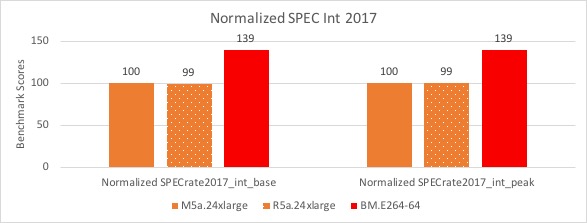
Figure 1: Normalized SPECrate integer comparison of Oracle AMD and AWS AMD instances
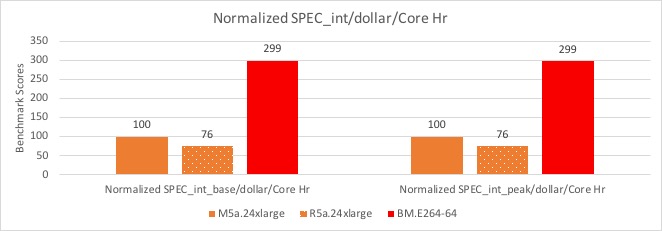
Figure 2: Normalized SPECrate integer/dollar/Core Hr comparison of Oracle AMD and AWS AMD instances
SPECrate Floating Point Tests
Figures 3 and 4 compare the normalized SPEC_fp/core and SPEC_fp/core/dollar between the Oracle instance and the AWS instances. The Oracle bare metal AMD instance performed 30 percent better than the best-performing AWS instance. Regarding price-performance, the Oracle AMD instance performed 280 percent better than the best of the AWS instances.
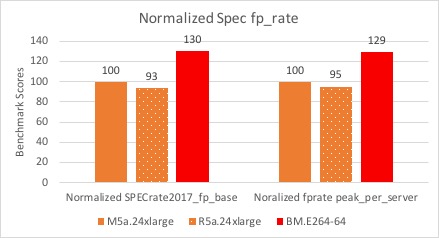
Figure 3: Normalized SPEC_fp_rate comparison of Oracle AMD and AWS AMD instances
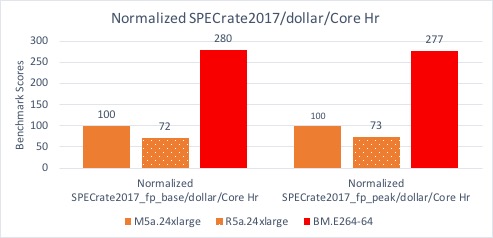
Figure 4: Normalized SPECrate2017/core/dollar comparison of Oracle AMD and AWS AMD instances
STREAM Memory Benchmark Tests
Figures 5 and 6 show the results of the STREAM Triad benchmark that was run on the Oracle AMD and AWS AMD instances. The Oracle AMD system performed 30 percent better than the best-performing AWS instance. Regarding price-performance, the Oracle AMD instance performed 306 percent better than the best of the AWS instances.

Figure 5: STREAM Triad GB/S comparison of Oracle AMD and AWS AMD instances
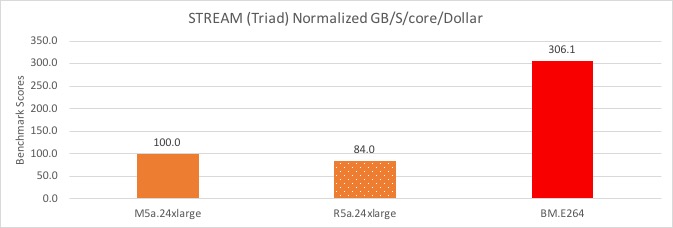
Figure 6: STREAM normalized GB/S/Core/Dollar comparison of Oracle AMD and AWS AMD instances
SPECJBB Tests
Figures 7 and 8 show the critical and max JOPS comparisons between the Oracle AMD instance and the AWS AMD instances. The Oracle AMD instance delivers 38 percent more normalized critical JOPS and 43 percent more max JOPS compared to the AWS AMD instances. Regarding price-performance, the Oracle AMD instance performed 296 percent better on critical JOPS and 308 percent better on max JOPS compared to the best AWS AMD instance.
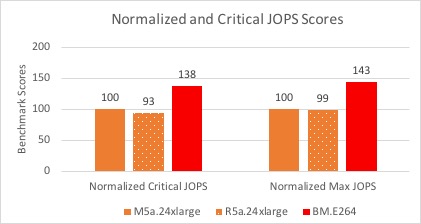
Figure 7: JOPS scores comparison between Oracle AMD and AWS AMD instances
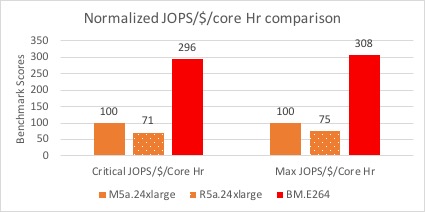
Figure 8: JOPS/$/Core Hr scores comparison between Oracle AMD and AWS AMD instances
Conclusion
In all of these benchmarks, the Oracle Cloud Infrastructure AMD compute instance performed at least 30 percent better than the AWS AMD instances. But more importantly, the Oracle instance was about 300 percent better, compared to the AWS AMD instances, in terms of price per unit performance.
For more information on how Oracle Cloud outperforms the competition, follow the #LetsProveIt hashtag on Twitter and LinkedIn. And if you haven’t yet tried Oracle Cloud, sign up for a free trial.